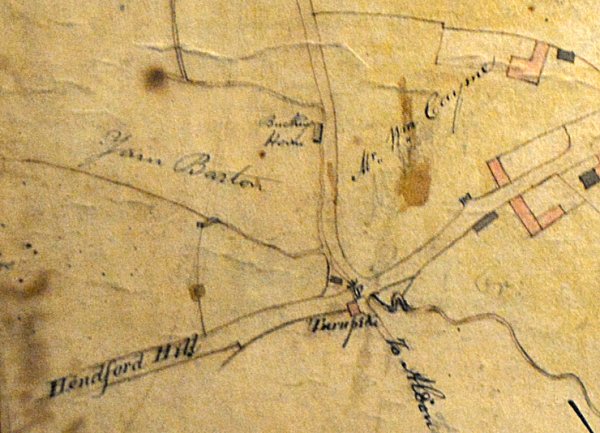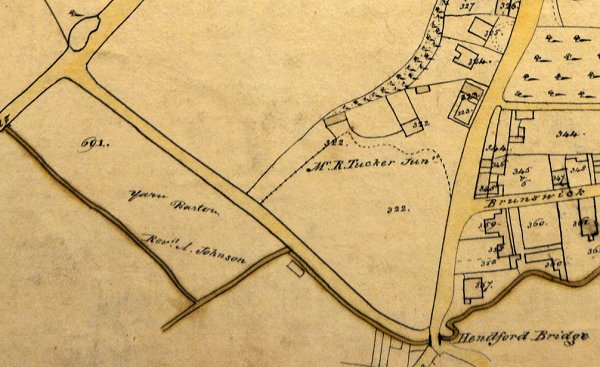pookmoor
pookmoor
Off Hendford Hill
Pookmoor was located to the west of Horsey Lane and was also known as Yarn Barton. It ran from the catchpool to the future Railway Hotel. It was the location of a building connected with the sailcloth industry, the Bucking House.
In his will of 24 August 1580, woollen draper Gyles Haywen wrote "... Also I geve & bequeathe unto the saide John all my yeres yett to comme of and in my meadowe lyinge within the Mannor of Hindford in the said p[a]rishe of yevell called Pookemore. ".
There are a couple of mentions of Pookmoor in the records. Edward Bullock Watts' map of 1831 shows that Yarn Barton was owned by the Reverend A Johnson. In the 1840s the three sons of Robert Cayme (of the sail cloth, dowlas and ticking manufacturing family) were listed as owners of property in Pookmoor, Yeovil, where Thomas Horsey was tenant.
In the 1841 census, three families were listed living at Pookmoor; the families of William Urch and Charles Hodder, both dairymen and the family of gardener George Shepherd. There were also two young dressmakers, both aged 24, Ruth Humphries and Mary Symes, living in a fourth cottage.
The 1846 Tithe Apportionment confirmed that Pookmoor was owned by Robert Cayme and occupied by Thomas Horsey. It was described as meadow, with an area of 4a 1r 20p.
In the 1850s or 1860s the southern part of the field gradually became the goods yard of Hendford Terminus, Yeovil's first railway station.
MAPS

E Watts' map of 1806 showing the junction of Hendford Hill, Hendford and today's Horsey Lane running off to top centre (the map is orientated such that north lies towards top right). The Bucking House is seen half-way along Horsey Lane, in the field called Yarn Barton, later known as Pookmoor.

E Watts' map of 1831 showing today's Horsey Lane running from the catchpool in today's West Hendford at top left down to Hendford Bridge at bottom right. The Bucking House is shown as is Yarn Barton, at this time owned by the Reverend A Johnson.

The 1886 Ordnance Survey showing today's Horsey Lane running diagonally across the centre, with West Hendford (formerly also Horsey Lane) at top left and Hendford at right. Originally the whole of today's West Hendford and Horsey Lane was called Horsey Lane. The Bucking House was demolished in the 1850s or 1860s as the site became the goods yard of Hendford Terminus, Yeovil's first railway station.